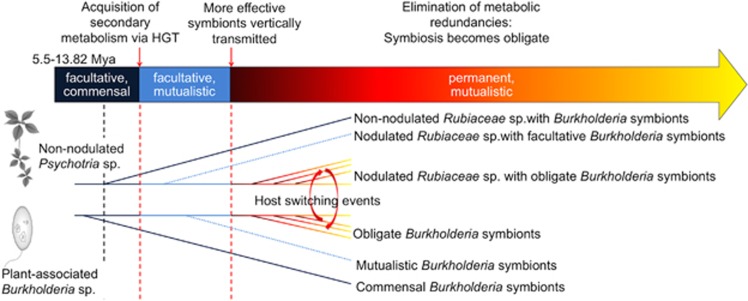Figure 5.
Evolutionary history hypothesis for the leaf nodule symbiosis. Ancestors of modern Psychotria sp. were probably in transient association with endophytic, or possibly epiphytic commensal bacteria. About 5.5–13.8 Mya, the bacteria acquired genes for the production of protective secondary metabolites, thereby giving a net fitness benefit to the association. As more effective symbionts were selected, the symbiotic bacteria became vertically transmitted, making the symbiosis permanent. A consequence of this permanent association is the increased dependency of the host on the leaf nodule bacteria, possibly through the loss of redundant metabolic pathways. All described modern nodulated Psychotria species are locked in the relationship with the leaf nodule bacteria, regardless of the production of protective metabolites. Intermediate stages shown in dashed lines (mutualistic Burkholderia symbionts, nodulated Rubiaceae with facultative symbionts) are hypothetical.

